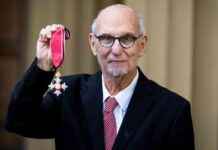A Disturbing Link: Could a Book Have Inspired the Murder of UnitedHealthcare CEO Brian Thompson?
The recent assassination of UnitedHealthcare CEO Brian Thompson outside the Hilton Midtown Hotel in Manhattan has left investigators puzzled by cryptic messages found at the crime scene. The phrases “deny,” “defend,” and “depose” etched onto bullet casings bear a striking resemblance to themes outlined in Jay M. Feinman’s 2010 book, Delay, Deny, Defend: Why Insurance Companies Don’t Pay Claims and What You Can Do About It. Could this connection suggest a chilling motive behind Thompson’s shocking murder?
A Chilling Discovery at the Crime Scene
Brian Thompson was brutally gunned down on December 4, with the gunman seemingly lying in wait to execute the premeditated attack. Multiple shots were fired, hitting Thompson in the back and calf before the suspect fled the scene on a bicycle. Among the evidence collected were bullet casings inscribed with the words “deny,” “defend,” and “depose,” leaving authorities and the public questioning their significance. The attack, described as targeted and deliberate, has sparked a hunt for the perpetrator.
A Troubling Connection to Feinman’s Book
Feinman’s book exposes the dark underbelly of the insurance industry, shedding light on deceptive practices that disadvantage policyholders. By delaying payments, denying legitimate claims, and aggressively defending their actions in court, insurance companies prioritize profits over fairness. The alignment between the phrases on the bullets and Feinman’s critical analysis has raised suspicions that the shooter may have drawn inspiration from the book’s scathing critique.
UnitedHealthcare’s Troubled Track Record
Thompson’s murder has cast a shadow on UnitedHealthcare’s operations, bringing attention to allegations of antitrust violations and unethical behavior. The company, embroiled in protests and legal battles, faces accusations of exploiting patients through bureaucratic obstacles and AI systems that wrongfully reject claims. The public outcry against UHG’s practices underscores the deep-rooted issues within the insurance giant, sparking calls for accountability and transparency.
The Investigation Progresses
As investigators delve into the potential link between Feinman’s book and the cryptic messages at the crime scene, new leads emerge. Surveillance footage captures the suspect entering Central Park post-incident, while a mobile phone found nearby offers hope for breakthroughs. With a reward on the line for information leading to the shooter’s capture, the race to solve Thompson’s murder intensifies, drawing the public into a web of intrigue and speculation.
As we grapple with the aftermath of this heinous crime, one can’t help but wonder: how far does the influence of literature extend in shaping real-world actions? The eerie parallels between Feinman’s book and the events surrounding Thompson’s death raise profound questions about the power of words and ideas to incite violence or provoke change in our society. In a world where information is readily accessible and opinions can be weaponized, the responsibility falls on all of us to critically engage with the narratives that shape our perceptions and behaviors. Let Thompson’s tragic fate serve as a stark reminder of the stakes involved when ideology meets action, and may his legacy inspire us to seek justice and truth in the face of adversity.













